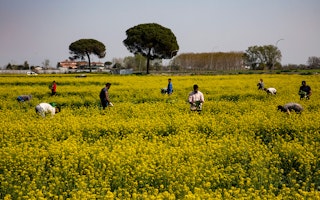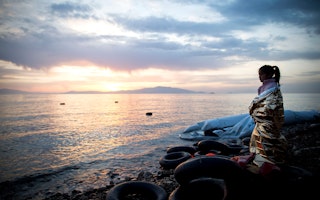Once Refugees Reach Europe, How Much Farther Should They Go?
By Madeline Garlick
Most asylum seekers arriving in the European Union come by irregular means, via land or sea, transiting several other countries along the way. In at least some of these transit countries, they might have had the opportunity to stay in relative safety. Such onward movement throws into sharp relief the question of where responsibility should lie among states for assessing a claim and providing protection where needed.
But this does not, and should not, necessarily mean the first country to which refugees flee. Only a limited proportion of refugees move onward from states near their countries of origin. Where they do so, it is often because of the unavailability or low standards of protection in the states to which they flee initially, limited access to assistance or other means of survival, separation from family members, or a lack of long-term solutions. In some cases, the risk they perceive in undertaking further irregular travel may be less than the risk in remaining where they are.
The 1951 Refugee Convention and other international refugee law instruments do not stipulate precisely how responsibilities for protection should be divided or shared between states. Despite efforts over many years, multilateral processes have not succeeded to date in developing a global legal framework which defines a generally accepted means of allocating responsibility clearly and fairly, and which could obviate the need for people to move on in search of protection and solutions.
In Europe, the Dublin system was developed in the 1990s in order to clarify which European member state would be responsible for examining the claim of an asylum seeker. It thereby sought to prevent secondary movement and what is referred to by some as “asylum shopping” by people who had already claimed protection in another European state.
The hierarchy of criteria in the Dublin system should, in theory, operate firstly to bring families together. If it did so, this would address one of the most powerful reasons why people move onwards within Europe. In practice, however, responsibility is attributed most frequently to the member state through which the person first irregularly entered the EU.
Recent proposals from the European Commission to relocate asylum seekers within the EU seek to redistribute responsibilities among the member states. They do this through an “emergency relocation” measure, as well as by establishing a permanent relocation scheme for use in future “crisis” situations. The proposed legislation does not require the process to take into account the intentions or preferences of asylum seekers regarding where they wish to seek protection, based on close connections to the country, integration prospects, or otherwise. As such, it fails to sufficiently respect the rights, agency, and legitimate interests of individuals, thereby increasing the risk that people will subvert the system and move onwards regardless.
Reducing the incentives for or drivers of onward movement can only occur if significantly greater efforts are made to improve asylum standards and secure the cooperation of all countries along main routes. The EU often emphasises its strong interest in cooperating with third countries on asylum and migration. But a greater share of the resources and political capital invested in that cooperation could and should be devoted to strengthening protection capacity, in order to counterbalance the high priority currently accorded to management of borders and migration.
Three areas of potential activity warrant particular attention. First, there needs to be an enhanced focus among states on working in genuine partnership, including between countries in regions of “destination” and those of origin and transit, to establish and reinforce protection capacity, and to encourage all states to take full ownership of responsibility for ensuring their asylum laws and institutions are effective.
Second, a stronger commitment is needed at the international level to ensuring access to durable solutions. Refugees languishing in protracted displacement are likely to resort in increasing numbers to irregular onward movement.
Finally, additional legal channels must be developed and expanded for those people who cannot find protection and solutions where they are. If the compulsion to move on is not addressed in more proactive and positive ways, Europe will continue to see desperate people prepared to take any risk to move onwards irregularly.
Farsighted collective approaches to onward movement and the protection needs of those who move are urgently needed in order to reinforce the effective operation and ongoing viability of the international protection system as a whole.
This post was adapted from an article in issue 51 of the Forced Migration Review, for which the Open Society Foundations provided partial support. It reflects the views of the author and does not represent the position of the UNHCR or United Nations.
Download the complete issue of the Forced Migration Review, Destination: Europe.
Madeline Garlick is senior legal coordinator and chief of the Protection Policy and Legal Advice Section, Division of International Protection, at the UNHCR.


